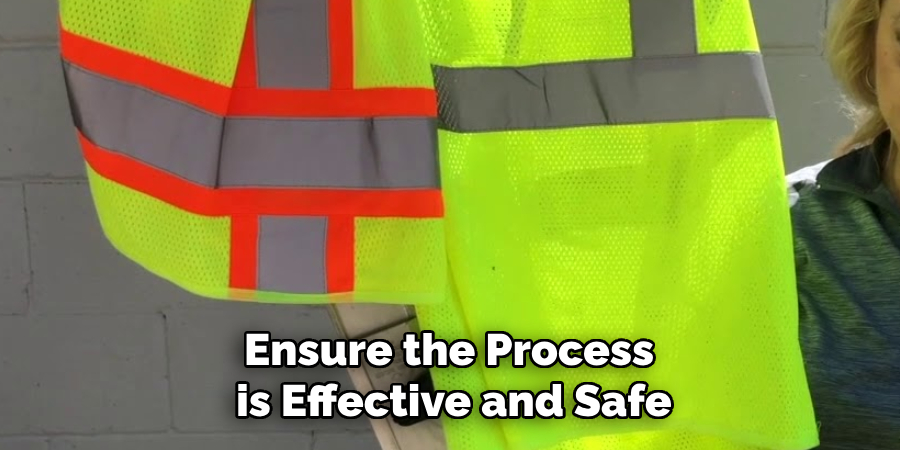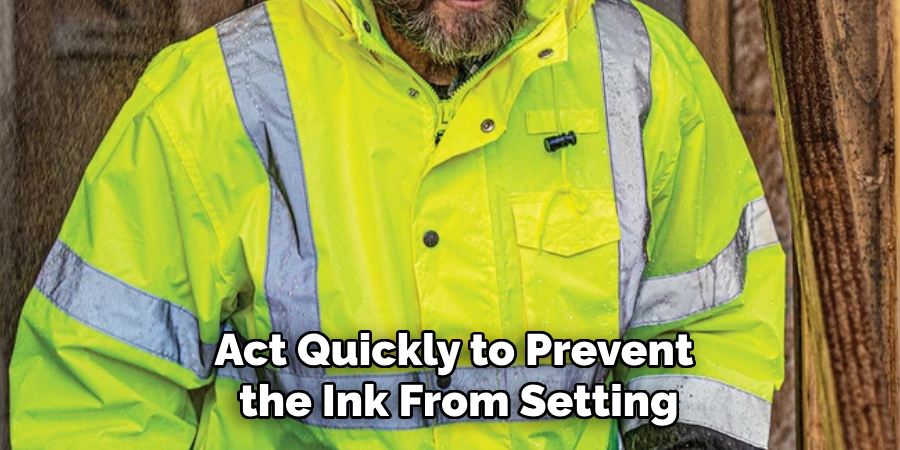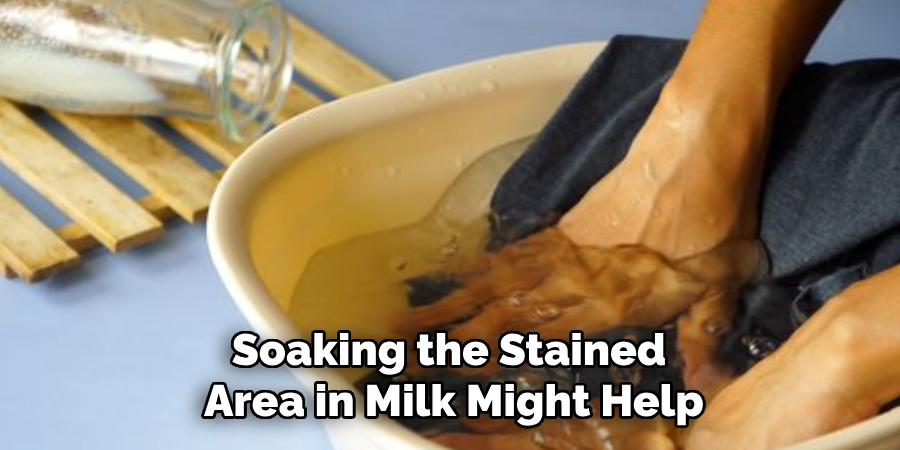Ink stains on a safety jacket can be stubborn and difficult to remove, especially without damaging the reflective material or fabric. Whether the stain is from a pen, marker, or other ink source, addressing it quickly and using the right techniques is essential to restore the jacket’s appearance and functionality. This guide will walk you through effective methods for how to remove ink stains from a safety jacket.

The Challenges of Removing Ink Stains from Safety Jackets
Removing ink stains from safety jackets presents a unique set of challenges. One primary concern is preserving the reflective strips and high-visibility fabrics, which are essential for safety. Harsh cleaning agents or excessive scrubbing can damage these materials, reducing their effectiveness. Additionally, ink stains often penetrate deeply into the fabric, making them particularly stubborn to treat. Standard cleaning methods may not fully remove the stain, and improper techniques can cause the ink to spread or set further into the material. Balancing effective stain removal with the need to protect the integrity of the jacket requires careful selection of cleaning products and methods.
Types of Ink Stains
Understanding the type of ink stain on your safety jacket is crucial for selecting the most effective removal method. Ink stains generally fall into three main categories:
Water-Based Ink Stains
These are commonly found in washable markers and some pens. Water-based ink is typically easier to remove because it does not contain harsh chemicals or oils. Cleaning these stains often requires less effort and gentle cleaning agents.
Oil-Based Ink Stains
Found in ballpoint pens and permanent markers, oil-based ink is more challenging to remove. The oils and dyes in this type of ink bond strongly to fabrics, requiring specialized solvents or detergents for effective cleaning.
Gel Ink Stains
Gel pens use pigment-based ink that is thick and vibrant. While they create bold marks, their composition makes them harder to lift from fabrics, often necessitating a combination of cleaning techniques and care.
Accurately identifying the type of ink stain helps ensure you choose the right cleaning products and methods, reducing the risk of damage to the jacket while increasing the chances of stain removal.
Tools and Materials Needed

Before attempting to remove ink stains from your safety jacket, gather the following tools and materials to ensure the process is effective and safe for the fabric and reflective elements.
- Clean White Cloths: For blotting and testing cleaning solutions. White cloths reduce the risk of transferring dyes to the jacket.
- Mild Detergent: A non-abrasive laundry detergent to help lift the stain without harming the fabric.
- Isopropyl Alcohol (Rubbing Alcohol): Effective for breaking down ink, especially for oil-based or gel inks.
- Distilled White Vinegar: A gentle, natural cleaning agent suitable for water-based ink stains.
- Oxidizing Stain Remover: Designed for tougher stains, it can safely break down ink without damaging most fabrics.
- Cotton Swabs: Ideal for spot-cleaning smaller stains and targeting specific areas without spreading the ink.
- Soft-Bristled Brush: For lightly scrubbing the stain without roughening or damaging the material.
- Cold Water: To rinse the treated area and remove any residue from cleaning agents.
- Protective Gloves: To protect your hands from cleaning chemicals and ensure safe handling.
Having these items on hand will prepare you to tackle the stain appropriately while minimizing potential damage to your safety jacket.
10 Methods How to Remove Ink Stains from a Safety Jacket
1. Immediate Action with Paper Towels

When you notice an ink stain on your safety jacket, it’s vital to act quickly to prevent the ink from setting into the fabric. Start by gently blotting the stain with a clean paper towel or cloth. Avoid rubbing, as this can spread the stain or push the ink deeper into the fibers. The goal is to absorb as much of the ink as possible without damaging the fabric. Once the excess ink is removed, you can proceed with one of the following cleaning methods.
2. Using Rubbing Alcohol for Tough Stains
Rubbing alcohol (isopropyl alcohol) is a common household solvent that can break down ink stains effectively. To use it, pour a small amount of rubbing alcohol onto a cotton ball or clean cloth. Gently dab it on the ink stain, being careful not to rub too hard, as this can damage the jacket’s fabric. Rubbing alcohol works by dissolving the ink’s pigments, making them easier to remove. After applying the alcohol, blot the stained area with a clean cloth until the stain lifts.
3. Soap and Water Solution
For lighter stains or if you prefer a gentler approach, a simple soap and water solution can work wonders. Fill a bowl with warm water and add a small amount of liquid dish soap or laundry detergent. Stir the solution to create suds. Dampen a cloth with the soapy water and blot the ink stain. Be patient and continue blotting until the stain begins to fade. Once the stain is removed, rinse the area thoroughly with clean water to remove any soap residue.
4. Vinegar and Baking Soda Paste

If the ink stain is stubborn and won’t come out with simple soap and water, try a paste made of vinegar and baking soda. This combination creates a mildly abrasive and acidic paste that can help break down tough stains. To make the paste, mix one tablespoon of baking soda with two tablespoons of white vinegar. Stir the mixture until it forms a thick paste. Apply the paste directly to the ink stain and let it sit for about 15 minutes.
5. Hairspray Method
Hairspray contains alcohol and other solvents that can dissolve ink stains. While this method is commonly used for clothing, it can also work on safety jackets, especially those made from sturdy fabrics. To use this method, spray a generous amount of hairspray directly onto the ink stain. Allow it to sit for several minutes to break down the ink. Once the hairspray has had time to penetrate the stain, blot the area with a clean cloth.
6. Commercial Ink Remover
If home remedies aren’t doing the job, consider using a commercial ink remover, which is designed to break down and remove stubborn stains. These products are available in most supermarkets or online, and they are specially formulated for treating ink stains on fabrics. To use a commercial ink remover, follow the instructions provided on the product’s label. Typically, you’ll need to apply the solution directly to the stain and let it sit for a few minutes before blotting it away.
7. Lemon Juice and Baking Soda Scrub
Lemon juice, with its natural acidity, is another effective solution for removing ink stains. When combined with baking soda, it forms an effective paste that can lift the stain without harming the fabric. To create the paste, mix a tablespoon of lemon juice with a tablespoon of baking soda. Apply the mixture directly to the ink stain and scrub gently with a soft brush or cloth. After scrubbing, let the paste sit for a few minutes before rinsing the area with cold water.
8. Milk Soak for Delicate Fabrics
If your safety jacket is made from delicate or more sensitive fabrics, such as cotton or polyester blends, soaking the stained area in milk might help. Milk has enzymes that can break down ink, and the fat content helps lift the stain. To use this method, simply pour a small amount of milk into a shallow bowl and soak the stained part of the jacket for several hours. After soaking, gently blot the stain with a cloth. If the stain persists, you can repeat the process or try one of the other methods listed.

9. Dishwashing Liquid and Ammonia Solution
For particularly stubborn ink stains, you may need a more powerful solution. A combination of dishwashing liquid and ammonia can break down the ink effectively. To create the solution, mix one tablespoon of dishwashing liquid with one tablespoon of ammonia and two cups of warm water. Dampen a cloth with the solution and blot the stain, being careful not to rub. The ammonia helps lift the ink from the fabric, while the dish soap helps break it down. After the stain has been removed, rinse the jacket thoroughly with clean water.
10. Professional Cleaning Services
If all else fails and the ink stain is proving too persistent, it might be time to seek professional help. Many dry cleaners offer stain removal services and have specialized cleaning solutions for tough stains like ink. Professional cleaning services are equipped with the right tools and knowledge to handle delicate fabrics and stubborn stains without causing further damage. While this may be a more costly option, it is often the most effective and safest method, especially for expensive or irreplaceable safety jackets.
Conclusion
Ink stains on safety jackets can be frustrating, but with the right approach, they can usually be removed without permanent damage to the fabric. It’s essential to act quickly and choose the right method based on the fabric type and the severity of the stain. From common household products like rubbing alcohol and vinegar to professional cleaning services, there are various ways to tackle ink stains effectively. Thanks for reading, and we hope this has given you some inspiration on how to remove ink stains from a safety jacket!

